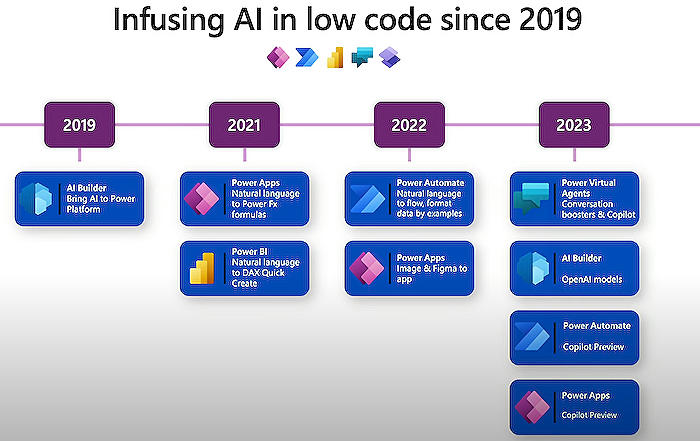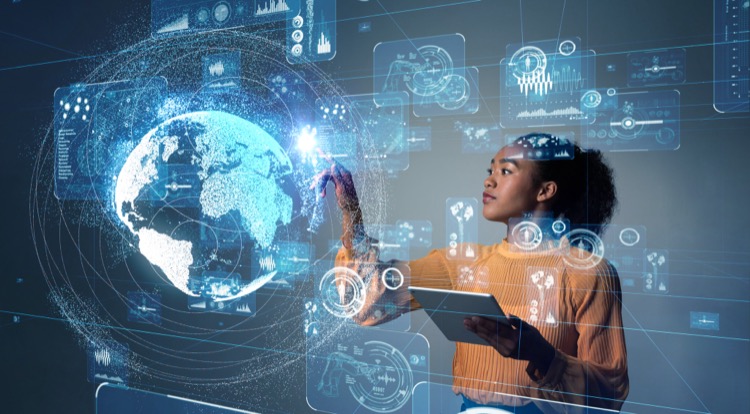- All of Microsoft
- Power Platform
AI Copilots in M365 & Power Platform: An Overview
Explore the revolutionary world of AI Copilots in Microsoft products with our first Copilot Chronicles episode. Subscribe for more!
In her latest video, "April Dunnam" delves into the fascinating realm of Artificial Intelligence Copilots within the Microsoft 365 and Power Platform ecosystems. As this is the inaugural installment of the "Copilot Chronicles", our journey begins with an exploration of the term "Copilot" and its origins.
Welcome to the first episode of "Copilot Chronicles!" Dive in with me as weexplore the world of AI Copilots. Discover where the term "Copilot" came from,how it's revolutionizing the tech landscape, and the role of AI giants likeGitHub and Microsoft. From Power Apps to M365, this episode will unravel thefascinating tapestry of AI-enhanced tools. Hit 'Subscribe' for more tech deepdives and Copilot adventures!

- 00:00 - Intro
- 00:20 - What is a Copilot?
- 01:03 - Microsoft Copilot History
- 01:29 - Power Apps Ideas
- 02:07 - Power Apps Copilot
- 02:23 - Power Automate Copilot
- 02:35 - Power Virtual Agents Copilot
- 02:56 - Power Pages Copilot
- 03:12 - Bing, Windows, M365 Copilot
- 03:29 - How do Copilots Work?
We go on to unearth how this innovative concept is making waves in the tech world, placing prominent companies like Microsoft and GitHub at the helm of this technological revolution. Ranging from Power Apps to M365, this episode reveals a captivating array of AI-powered tools and their applications.
Interestingly, the author highlights the vitally inclusive role that this AI copilot plays across Microsoft products. In the notable “Future of Work” virtual event, Microsoft launched this AI copilot to bring simplicity and increased efficiency to Power Apps, Power Virtual Agents, and Power Automate. These applications stand to benefit from the AI-based assistance, simplifying the creation of line-of-business apps, flows, and bots.
Moving further into the AI copilot’s role, Dunnam elaborates on enhancements made to the Microsoft Power Platform. Here, users can articulate their needs via natural language prompts and the copilot swiftly constructs solutions based on this input. An intuitive back-and-forth with the copilot, akin to interacting with Bing or ChatGPT, helps refine these ideas, reducing the build time through its streamlined process.
Providing practical illustrations, Dunnam describes Power Apps, a low-code component of the Power Platform. Users can command, "Create a time and expense application to enable my employees to submit their time and expense reports" and the copilot will create the app accordingly. From crafting user interfaces and integrations to analyzing and visualizing data, the range of tasks that Power Apps can perform is vastly broadened through AI.
It's worth noting that for Power Virtual Agents, a unique element of the same platform, developers can now seamlessly add chat bots to their apps, further enhancing their functionality. This integration of AI also extends to Power Automate, a highly effective tool by Microsoft designed for automating workflows. Early adopters have reported a 50% reduction in development time.
The blog reveals a unique feature that stems from the integration with GPT- the ability to generate text or summarize documents. However, owing to their current "experimental" status and being powered by Azure OpenAI Service with GPT, Microsoft advises against using these features for production. Indeed, this warning extends to situations where an automated content update might behave unexpectedly.
AI Copilots: Enhancing Efficiency and Productivity
AI copilots, bolstered by technological front-runners like Microsoft, are no longer an abstract concept confined to sci-fi books or futuristic movies. Today, they present a powerful tool that simultaneously promises efficiency and productivity in the realm of tech through advanced capabilities like natural language prompts. With continuous innovations across platforms such as Power Apps, Power Automate, and Power Virtual Agents, it's clear that AI copilots are rapidly evolving, and we are all aboard for this thrilling ride.
AI Copilots in M365 & Power Platform
Welcome to this expansive world of AI Copilots. Today, our focus is on gain a deeper understanding of how powerful assistant programs can transform and revolutionize our technological workspace. Copilots, a term originally coined in the aviation industry, have now been incorporated into the digital world, particularly in renowned tech companies such as Microsoft and GitHub.
Our introductory episode intends to uninhibitedly investigate this captivating field of technology. From Power Apps to M365, we'll delve deep into the intriguing concept of AI-enhanced tools. So, let's unravel this enchanting tech veil together.
Microsoft’s AI assistant program took the tech world by storm at its virtual "Future of Work" event. Microsoft made it clear that its objective with this "AI assistant" conception was to use natural language processing to make the development of apps, flows, and bots more streamlined and user-friendly.
Microsoft’s Copilot demonstrates its capabilities by interacting with its users, similar to the new Bing or ChatGPT. You specify your requirements to the program and then fine-tune these ideas through an interactive conversation with the bot in the chat sidebar.

In Power Apps, Microsoft's main low-code tool, users can create apps with simple, comprehensible sentences. For instance, one can say, "Create a time and expense application to enable my employees to submit their time and expense reports," and the Copilot will generate this app for them. However, the capabilities of the Copilot don’t end here. Since humans excel at analyzing complex data, the Copilot can assist users in both visualizing and understanding their data (Microsoft’s example here is: “What are the most common reasons an inspection fails?”).
Drawing a parallel with Power Virtual Agents, a product from the same platform equipped with similar updates, Power Apps now enables the user to integrate the chatbot effortlessly.
Emphasizing Microsoft's tool for automating workflows, Power Automate, the process is quite identical, and the company professes that users during its preview witnessed a reduction in the time it took to develop a Power Automate workflow by 50%.
There's a notable feature to highlight: Since the service is linked with GPT models, Power Automate can now automatically generate text or summarize existing documents.
For now, Microsoft qualifies these features as "experimental previews, powered by Azure OpenAI Service with GPT." They caution users that these features aren't intended for production use, potentially a disclaimer for any expedited daily content update hitches.
To learn more about this exciting new field of AI-assistant programs, follow along on our adventurous journey, subscribe, and stay tuned for more on Copilot Chronicles!
For those interested in more in-depth learning, consider Microsoft’s official training and certification programs, like the "Microsoft Power Platform Fundamentals" or the "AI-900: Microsoft Azure AI Fundamentals" course.

Keywords
AI Copilots in M365, Understanding AI Copilots, Copilot Chronicles Ep.1, M365 Power Platform, Microsoft 365 AI, Power Platform AI, Microsoft Copilot Chronicles, AI Copilot Tutorial, M365 Copilot Guide, Power Platform Copilot Episode
